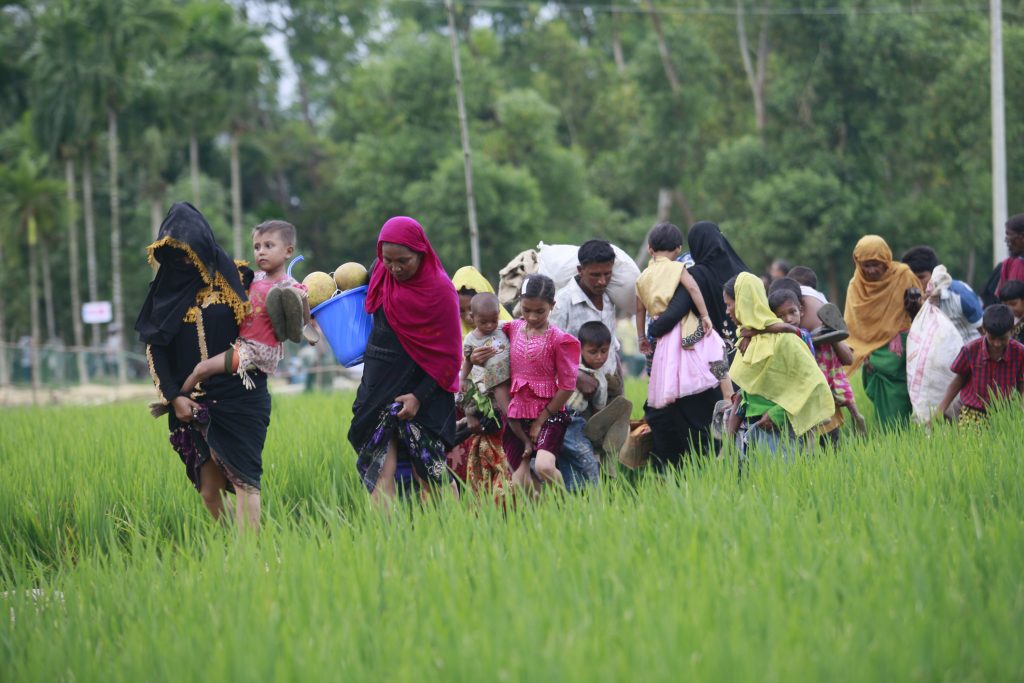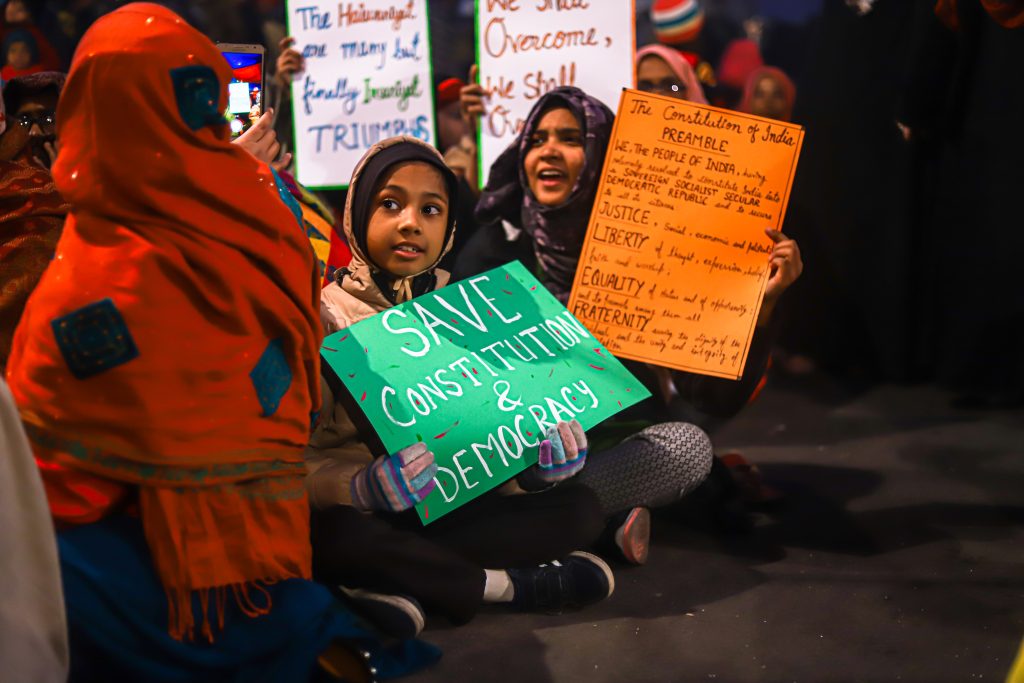 Knox Thames is a senior fellow at Pepperdine University and a senior visiting expert at the U.S. Institute of Peace. The following post comprises his remarks during a panel on “Understanding Religious Freedom: Why Does It Matter?” at the ICLRS 31st Annual International Law and Religion Symposium, 7 October 2024. Portions of his remarks were drawn from his book Ending Persecution: Charting the Global Path to Religious Freedom (Notre Dame Press 2024).
Knox Thames is a senior fellow at Pepperdine University and a senior visiting expert at the U.S. Institute of Peace. The following post comprises his remarks during a panel on “Understanding Religious Freedom: Why Does It Matter?” at the ICLRS 31st Annual International Law and Religion Symposium, 7 October 2024. Portions of his remarks were drawn from his book Ending Persecution: Charting the Global Path to Religious Freedom (Notre Dame Press 2024).
Introduction
There can be no durable peace without religious freedom. There may be the cold peace of a cessation of hostilities. However, lasting peace will not come until people can live together, recognizing the rights of their neighbors to pursue truth as their conscience leads without fear of discrimination or violence.
Religious freedom and peacemaking go hand in hand. Without religious freedom, individuals will not feel safe to talk about the drivers of conflict, which often orbit issues of religion and belief. The power of interfaith work can only be unleashed if participants know their religious view or beliefs will not trigger government prosecution or persecution from society. Honest discussions will not occur if participants must constantly look over their shoulders or withhold crucial perspectives out of fear of reprisal.
Human flourishing will more quickly come when everyone can believe (or not believe) as they choose and live according to their conscience. Inclusive religious freedom can foster diverse and tolerant societies where individuals can express their religious views safely. The “divine right” of religious freedom protects an individual’s ability to seek truth as their conscience leads, find meaning, share with others, and search for ultimate truth.
Religious freedom is essential to human rights, a cornerstone of a democratic society, and an often-overlooked component of peacemaking. Freedom of religion or belief promotes peace in ways that can encourage healthy dialogue between different religious groups, leading to increased understanding, respect for each other’s beliefs, and de-escalation, and helping build stronger, more cohesive communities. Religious freedom matters for peace.
Policymakers will succeed if they take this into consideration and will fail if they do not acknowledge the importance of religion to billions of people. Across the world, individuals of all backgrounds are searching for something more during their time on Earth. Concepts of the afterlife address profound inquiries concerning mortality and the eternal. The desire for soul freedom is a prime motivator in every society. Men and women don’t live by bread alone.
But religious freedom is a right under assault.
To arrest the rising tide of religious persecution and promote peaceful societies, we need a holistic response to fight for freedom of conscience for everyone to ensure twenty-first-century persecution does not bleed into the next century. Violent repression continues as governments and authoritarian regimes want to set the rules of the road on the highway to heaven, with stiff penalties for unapproved lane changes. Not only do governments persecute, but extremists and terrorists will stop at nothing to victimize any who challenge their twisted interpretation or represent different beliefs. Studies from the Pew Research Center indicate that 84% of the global population believes in God or a higher power. At the same time, roughly two-thirds of humanity lives in countries with significant restrictions on faith practices. This is a recipe for human rights violations and unrest as people struggle to peacefully live out their faith.
Types of Persecution
In my recently released book Ending Persecution, I identify four types of persecution and suggest ways to counter it. While persecution sounds monolithic, variants of persecution manifest in diverse ways, much like mutations of COVID we’ve all learned about. Different illnesses require different treatments; the same is true with any response to defeat the various forms of persecution and promote peace.

I identify authoritarian persecution and examine China’s genocidal persecution of Uyghur Muslims and Burma’s genocidal effort to cleanse their country of Rohingya Muslims. Next, I identify extremism as a form of persecution where community leaders whip up mobs to assault minorities, focusing on Pakistan, which I have visited countless times. Next, I highlight democratic persecution, where a majority faith group can use the power of the ballot box to transform their beliefs into law and then enforce them. India comes under great focus, as does Nepal. Lastly, I identify terrorism as a form of persecution, looking at what’s unfolded in Iraq and different efforts to rebuild conditions where victimized minorities feel like they have a future.
Practical Solutions for Promoting Religious Tolerance and Positive Pluralism
But I don’t just admire a problem; I also offer practical solutions based on my 20 years of government service. Regarding the topic of peacemaking today, a key recommendation from the book is we should focus on education as a way to prevent human rights abuses and promote peace.
We live in a moment of unprecedented globalization, with people holding different faiths and coming from different ethnicities interacting and living together as never before. As a result, environments become more pluralistic while extremists work to poison the cultural climate against diversity.
Helping students appreciate pluralistic societies and respect human rights is a long-term solution to protect culture from extremist degradation. Education is perhaps the most powerful tool in this effort. As the son of teachers working in Kentucky’s impoverished Appalachian region, I have seen how education improves lives, lifts people out of poverty, and brings generational change to families. It is true everywhere.
Yet teaching tolerance and positive pluralism rarely happens. Encouraging tolerance can safeguard human rights, fight collective amnesia about a country’s diverse past, and protect civic space for diversity of beliefs. I have three recommendations.

First, teaching tolerance needs to be a diplomatic priority for peacemaking and human rights promotion. Education is a priority for those who are against the values of diversity and pluralism. For example, when an extremist group joins a coalition government, they generally choose the education ministry if they cannot take charge of the interior ministry. While preferring guns to control society, they realize the long-term advantages of influencing future leaders toward their worldview through education. Playing a long game, these groups understand how changing attitudes by just five degrees can lead an entire nation to a different place within just one generation.
We should be as wise.
I’ve seen how direct diplomatic pressure can help. In 2007, when I was a young desk officer at the U.S. State Department working on religious freedom, I was tasked with evaluating how the Government of Saudi Arabia addressed diversity through education. Why was the United States concerned about what Saudi Arabia taught kids? In the post–9/11 context, education was no longer an internal concern, with Saudis comprising many of the attackers. And it was open knowledge that Saudi Arabia had exported hateful and violent textbooks worldwide for decades. The government had committed to reforms. So it was an exercise of the Reagan doctrine: trust but verify.
There was nothing wrong with governments teaching their country’s children about their established faith. While it is not the U.S. approach, international human rights standards permit religious instruction on beliefs and theology, not to indoctrinate but to educate. But we found government-approved textbooks teaching children to fear or hate others, sowing the seeds that could lead to discrimination or worse, and sometimes even calling for outright violence. Thankfully, reforms have passed in the ensuing years, improving the textbooks. It showed the importance of diplomatic engagement. Yet this kind of diplomatic engagement in education rarely happens.
Second, we need a funding revolution in education support, viewing it not just as reading, writing, and arithmetic but as a peacemaking tool that can protect youth from hateful ideologies. The United States is a huge supporter of education through our foreign aid. In this, we need to allocate specific resources for teacher training on positive pluralism because educators play a crucial role in fostering an inclusive classroom environment. In the same way, resources are needed to improve textbooks, as they often reinforce biased views of certain groups, disseminate inaccurate or flawed depictions of historical events, or neglect to acknowledge the existence of religious minorities altogether. How textbooks present and teachers teach their curricula profoundly influences whether children appreciate and respect ethnic and religious diversity. We need specific funding for teaching tolerance.
Lastly, we need to leverage the power of sacred sites to promote pluralism. Discussing religious freedom can be difficult, especially in conservative societies. Research I’m conducting at Pepperdine University and with the U.S. Institute of Peace is finding that sacred sites provide an indigenous inflection point to discuss the importance of respecting diversity, others’ beliefs, and others’ holy places.
Often overlooked, sacred sites can build bridges to a brighter future, as sacred heritage sites tell of a diverse but forgotten past. They demonstrate a history of living together despite profound differences.
The Sacred Sites Promoting Pluralism approach does not point or lecture but listens. It asks what can be learned from a community’s own history of diversity and what can be applied to our diverse societies today. And it can also work with contemporary sacred sites, using them as places of inclusion and inquiry, not places of exclusion and separation. We’ve held a series of discussions with practitioners from the field of human rights and religious freedom, cultural heritage protection, and interfaith promotion near Geneva and Washington, D.C. We are starting to see this idea gain traction and hope to find funding to test it in the field. Teaching a community about their past and present diversity through their sacred sites is an unexplored pathway that could bring about durable peace. By leveraging the untapped potential of sacred sites to promote peaceful pluralism and respect for different beliefs in a locally acceptable way, we can foster interreligious peace and appreciation of religious pluralism.
Conclusion
In conclusion, an underappreciated approach to peacemaking and a solution to the complex problem of persecution is education. But it will not be easy, as how children are taught is a sensitive issue in every country, including the United States. However, time is working against us, as once the seeds of extremism are sown, they can bloom into a mentality that justifies violent acts. The United States and its likeminded allies should lead an effort through greater funding, empowering groups on the ground to create content appropriate for their context, as well as diplomatically encouraging countries to ensure their education systems teach positive pluralism. Proactive efforts to teach tolerance in schools and to remind societies about their diversity through sacred sites can help pluralistic societies live together in peace despite differences. This is good for peacemaking and for religious freedom.
